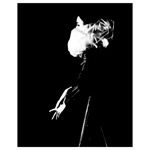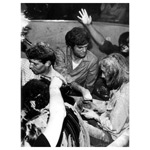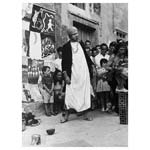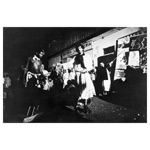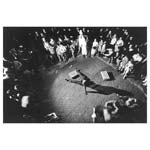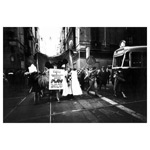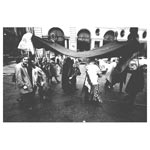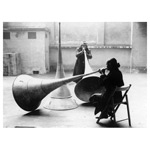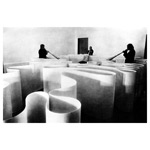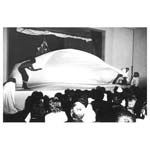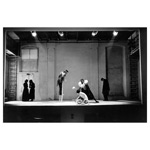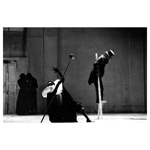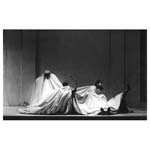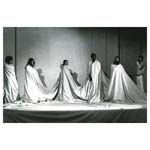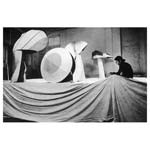A group crystallized around the first collective actions and the open studio. Called The Zoo [Lo Zoo], it was made up of people from different artistic disciplines (music, literature, theater, visual arts). Between 1968 and 1970, Pistoletto put on a series of performances with them, conceived as creative collaborations and as a form of communication not mediated by objects. The Zoo put on shows, in Italy and elsewhere in Europe, in all kinds of spaces — streets, squares, discotheques, beer halls, theaters and galleries — and collaborated on several occasions with Musica Elettronica Viva, a group formed by avant-garde musicians from the United States who had settled in Rome. The makeup of The Zoo would vary over the years and the critic Henry Martin and the gallerist Lucio Amelio would also take part in some of the performances. The Zoo’s first show, The Trained Man [L'uomo ammaestrato], took place in the streets of Vernazza, a small village on the Ligurian Riviera, near Corniglia, where Pistoletto had bought a house in 1968. Local residents would participate in several of Pistoletto’s theatrical performances over the next few decades.
“The Zoo grew out of a quip made by Carlo Colnaghi: “I’m in the same position as a caged lion.” So-called civilization had relegated every animal to its cage. The less dangerous, more docile and submissive had been placed in large and common enclosures: factories, housing projects, sport stadiums [...]. Artists are isolated at the Biennali in Venice, in theaters, museums, and organized events. [...] Now we know we are The Zoo. We no longer work for viewers; we ourselves are actors and viewers, makers and consumers. Among those of us who are able to work together there is a direct, clear, perceptive and instantaneous relationship [...]. When you see, hear and smell a performance we put on together, like that of The Zoo and Musica Elettronica Viva, what you think you understand will just be the exterior, the shell, but you are never going to know what has happened until you become actors and viewers on this side of the bars.”
(M. Pistoletto, “Lo Zoo”, Teatro, no. 1 [Milan 1969], 16)
“The Mirror Paintings could not live without an audience. They were created and re-created in accordance with the movement and the interventions they reproduced. The step from the Mirror Paintings to theater — everything is theater — seems simply natural to me. [...] It is less a matter of involving the audience, of letting it participate, as to act on its freedom and on its imagination, to trigger similar mechanisms of liberation in people. So I was interested in the people who followed us in a parade from Porta Palazzo to Porta Nuova in Turin, when we staged Canopy Theater, a sort of procession with crazy costumes; as well as the people in the Vicolo dell’Atleta in Trastevere [Rome] who stopped to watch a sort of melodrama on how man is ‘tamed’ today, with a banner and a narrator, a sort of storyteller, but with everything freer, not didactic but fanciful. And the ones that responded have mainly been children, or the simplest members of the public, the less conditioned ones, who still know how to let their jaws drop.”
(M. Pistoletto, interviewed by G. Boursier, Sipario [Milan, April 1969], 17).
